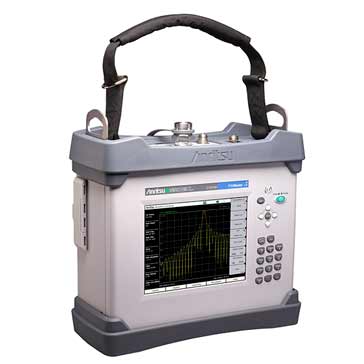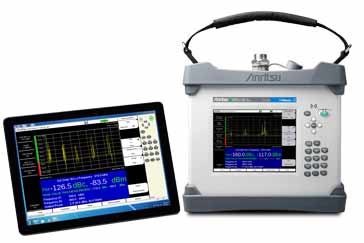PIM Testing & Testers
As passive intermodulation, PIM can be a major issue, knowing how to test and locate the issue can be very important.
Home » Radio & RF technology » this page
Passive Intermodulation, PIM, Includes:
What is passive intermodulation
PIM test
Passive intermodulation, PIM is a key performance limiter in some systems. When PIM occurs, it is often necessary to locate and eliminate the issue and in this way the performance of the overall system can be significantly improved.
PIM can significantly systems where duplex transmissions occur - a transmitter transmitting whilst the receiver is receiving. If multiple transmissions are being made at the same time, it can be a major issue.
Systems like mobile phone base stations where multiple transmissions are made as a result of several carriers being present are a prime instance where PIM is important.
As passive intermodulation can significantly degrade performance as a result of the noise generated, when it occurs it is necessary to locate it easily and swiftly.

PIM test equipment
To achieve this, a variety of passive intermodulation testers have developed that enable the sources to be quickly and easily located so that corrective action can be undertaken. These PIM testers are relatively specialised but a number of manufacturers sell PIM testers that have been specially developed for field use and they are easy to manipulate and test for any issues.
This PIM test equipment will be able to provide a variety of results including the level of any passive intermodulation products and sometimes the distance of the PIM generation from the PIM tester. This is very useful in locating the position of faults in a feeder system where there may be a number of candidate areas that could cause the generation of the unwanted products.
PIM testing
There are a number of areas where PIM testing may be required. One of the most common PIM testing applications is for antennas and antenna feeder arrangements for cellular base stations. Here some of the major issues with PIM occur as a result of connectors, connections, and even the feeder for antennas themselves.
While the system may operate satisfactorily when installed, degradation, especially due to the weather will occur with time. Accordingly it is necessary to undertake PIM testing to ensure the performance of the system is satisfactory, and if there are any issues, to help locate the source of the passive intermodulation signals.
With PIM performance and hence PIM testing growing in importance the International Electrotechnical Commission, IEC, Technical Committee 46, Working Group 6 is undertaking work to prepare test methods and to investigate relevant limits, for Passive Intermodulation in the RF and microwave frequency range for passive components (i.e. connectors, cables, cable assemblies, waveguide assemblies and components).
Line sweeping vs PIM testing
When looking at the performance of RF areas such as feeders and antennas, for systems such as cellular base stations, there are two types of testing that are often undertaken. These are both different types of test and reveal different aspects of the system under test. It may be thought that line testing may be applicable for testing PIM performance, but a summary is given below:
- Line sweeping : This test measures the signal losses and reflections within a transmission system over the band of interest. It is not able to look at passive intermodulation products, although it may detect that there is a poor connection which in turn may introduce PIMs, although it cannot detect whether any passive intermodulation is present.
- PIM testing: PIM testing specifically looks for the presence of passive intermodulation products within the item under test. It cannot detect losses or reflections.
It can be seen that the two types of test are very different, although they test similar areas of a radio transmission system. If passive intermodulation needs to be tested then a PIM tester is required.
PIM testers
PIM testers or analyzers are sophisticated forms of test equipment. While a PIM test system can be assembled from signal generators and a spectrum analyser together with a few other components, specialised PIM testers are often needed because testing is undertaken in situations such as cellular base station sites, etc.
A basic block diagram of a PIM tester is shown below.

The block diagram shows a typical passive intermodulation test system. In the PIM tester two signals at the relevant frequencies are generated and then amplified to ensure that they are of a sufficiently high level for the test.
The signals are combined - in many testers an RF isolator may be used to prevent reverse RF power from the combiner entering the signal generator and causing spurious intermodulation products in the signal generator output that would alter the readings.
The two signals from the signal generators simulating the transmitted signals are then applied to a diplexer within the PIM tester. This only allows signals through from the transmitter in the transmit band to the unit or component under test, e.g. a feeder, feeder assembly, etc. The item under test is terminated in a matched load - typically 50Ω to ensure a lifelike simulation.
Any PIM spurious signals generated within the receive band will be able to return through the diplexer and be routed through to the receiver / detector where they can be detected and their levels and frequencies noted. [The frequencies of the PIM signals will be known because they are related to the two original frequencies of the signal generator frequencies, f1 and f2 as n⋅f1 ± m⋅f2.

Passive intermodulation testing
Passive intermodulation testing often requires to be undertaken in the field. Engineers may even need to be up cellular base stations or in other difficult locations.
As a result, PIM testers must be designed to be operated with the minimum of intervention. They must be ergonomically designed and require a minimum amount of set up, especially for applications where engineers may be up towers.
 Written by Ian Poole .
Written by Ian Poole .
Experienced electronics engineer and author.
More Essential Radio Topics:
Radio Signals
Modulation types & techniques
Amplitude modulation
Frequency modulation
OFDM
RF mixing
Phase locked loops
Frequency synthesizers
Passive intermodulation
RF attenuators
RF filters
RF circulator
Radio receiver types
Superhet radio
Receiver selectivity
Receiver sensitivity
Receiver strong signal handling
Receiver dynamic range
Return to Radio topics menu . . .



